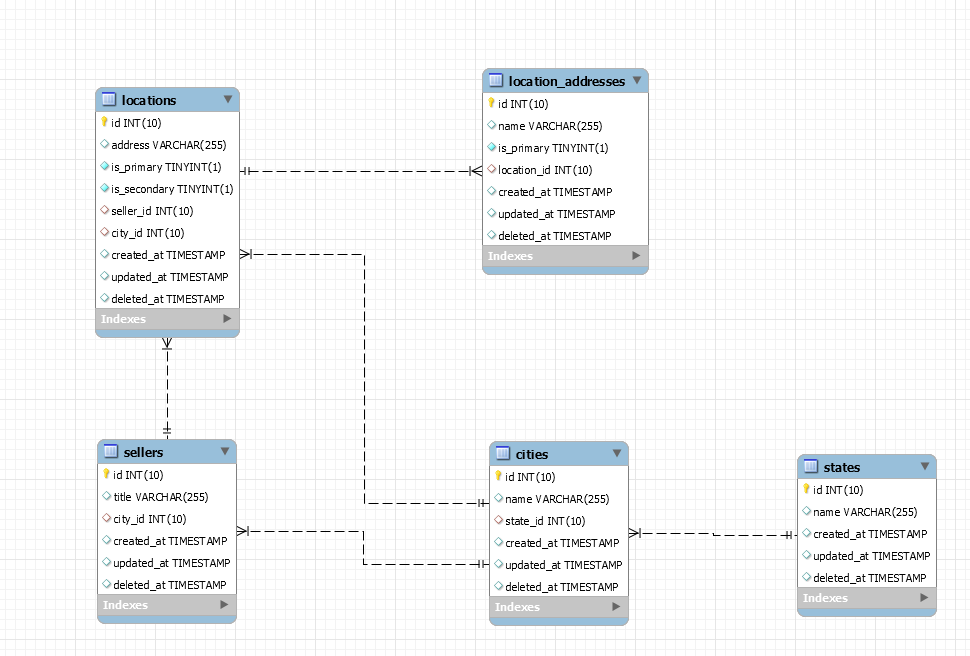
For example, consider the following query: Sometimes you may need to apply casts while executing a query, such as when selecting a raw value from a table. If you need to rotate your application's encryption key, you will need to manually re-encrypt your encrypted attributes using the new key. Typically, this value corresponds to the value of the APP_KEY environment variable. In addition, since the values are encrypted in the database, you will not be able to query or search encrypted attribute values.Īs you may know, Laravel encrypts strings using the key configuration value specified in your application's app configuration file. In addition, the encrypted:array, encrypted:collection, encrypted:object, AsEncryptedArrayObject, and AsEncryptedCollection casts work like their unencrypted counterparts however, as you might expect, the underlying value is encrypted when stored in your database.Īs the final length of the encrypted text is not predictable and is longer than its plain text counterpart, make sure the associated database column is of TEXT type or larger. The encrypted cast will encrypt a model's attribute value using Laravel's built-in encryption features.

To accomplish this, you may specify the attribute and enum you wish to cast in your model's $casts property array: Typically, this will be the timezone specified in your application's timezone configuration option.Įloquent also allows you to cast your attribute values to PHP Enums.

If a custom format is applied to the date or datetime cast, such as datetime:Y-m-d H:i:s, the inner timezone of the Carbon instance will be used during date serialization. Consistently using the UTC timezone throughout your application will provide the maximum level of interoperability with other date manipulation libraries written in PHP and JavaScript. You are strongly encouraged to always use this serialization format, as well as to store your application's dates in the UTC timezone by not changing your application's timezone configuration option from its default UTC value. All attribute accessor / mutator methods must declare a return type-hint of Illuminate\Database\Eloquent\Casts\Attribute:īy default, the date and datetime casts will serialize dates to a UTC ISO-8601 date string ( T21:05:54.000000Z), regardless of the timezone specified in your application's timezone configuration option. The accessor will automatically be called by Eloquent when attempting to retrieve the value of the first_name attribute. In this example, we'll define an accessor for the first_name attribute. This method name should correspond to the "camel case" representation of the true underlying model attribute / database column when applicable. To define an accessor, create a protected method on your model to represent the accessible attribute. Or, you may want to convert a JSON string that is stored in your database to an array when it is accessed via your Eloquent model.Īn accessor transforms an Eloquent attribute value when it is accessed. For example, you may want to use the Laravel encrypter to encrypt a value while it is stored in the database, and then automatically decrypt the attribute when you access it on an Eloquent model.
#Eloquent join how to
Through this tutorial, you have learned how to use laravel eloquent join or inner join with multiple conditions.Accessors, mutators, and attribute casting allow you to transform Eloquent attribute values when you retrieve or set them on model instances. Let’s see the laravel eloquent join 3 table with multiple conditions is as follows: $users = User::join('posts', 'er_id', '=', 'users.id') >get() Laravel Eloquent Join 3 Table with Multiple Where Conditions Let’s see the laravel eloquent join with where conditions is as follows: $users = User::join('posts', 'er_id', '=', 'users.id')


>get() Laravel Query Builder Join with Multiple Where Conditions Let’s see the laravel eloquent join with where condition is as follows: $users = User::join('posts', 'er_id', '=', 'users.id') Laravel Eloquent Join 3 Table with Multiple Where Conditions Laravel Eloquent Join With Where Condition.Laravel Query Builder Join with Multiple Where Conditions.Laravel Eloquent Join With Where Condition.Let’s see the laravel join or inner join with multiple conditions is as follows: Laravel Eloquent Join with Multiple Conditions Laravel eloquent join or inner join with multiple conditions Through this tutorial, you will learn how to use laravel eloquent join or inner join with multiple conditions.


 0 kommentar(er)
0 kommentar(er)
